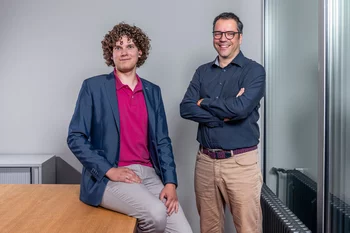A research team from PSI and ETH Zurich, together with the Baden Cantonal Hospital and University Hospital Zurich, wants to improve a method used for diagnosing breast cancer.
Women - and their doctors - can hope for huge improvements in breast cancer screening. A team of researchers from the Paul Scherrer Institute PSI and ETH Zurich, together with the Baden Cantonal Hospital (KSB) and the University Hospital Zurich (USZ), has succeeded in refining mammography, x-ray imaging technique used to detect tumours in their early stages, to produce considerably more reliable results and be less unpleasant for the patient. With this, the researchers have extended conventional computed tomography (CT) such that the image resolution is significantly higher for the same radiation dose. This means that small calcium deposits, known as microcalcifications, which can be a sign of breast tumours, could be detected earlier than before, and this improves the chances of survival for the women concerned. The experts believe that this technique, which is based on X-ray phase contrast, could be swiftly put to use in clinical settings. "We need a little bit more time," says Marco Stampanoni, head of the research group at PSI, who is a professor of X-ray imaging at ETH Zurich. "But with our work we have taken an important step on the way."
Earlier diagnosis means better treatment
In 2020, breast cancer was the most commonly diagnosed form of cancer worldwide, with over two million cases. It accounts for 24.5 percent of cancer cases in women, and 15.5 percent of cancer-related deaths. Mammography screening programmes, which have been shown to reduce mortality rates, are used as an early detection tool in many developed countries. As with all tumours, the same applies to those found in the breast: the earlier the diagnosis is confirmed, the sooner the appropriate therapy can begin and the higher the chances of survival. However, the effectiveness of mammography screening is controversial. Control studies have found that only 46 percent of suspected cases detected during screening are confirmed as cancer. Such false alarms cause great emotional distress to the patients concerned; it can take two to three weeks before the biopsy result finally gives the all-clear. In addition, mammography misses 22 percent of genuine cases, lulling the women concerned into a false sense of security when in fact they do have the disease. This is even more serious because valuable time is wasted before treatment can begin.







